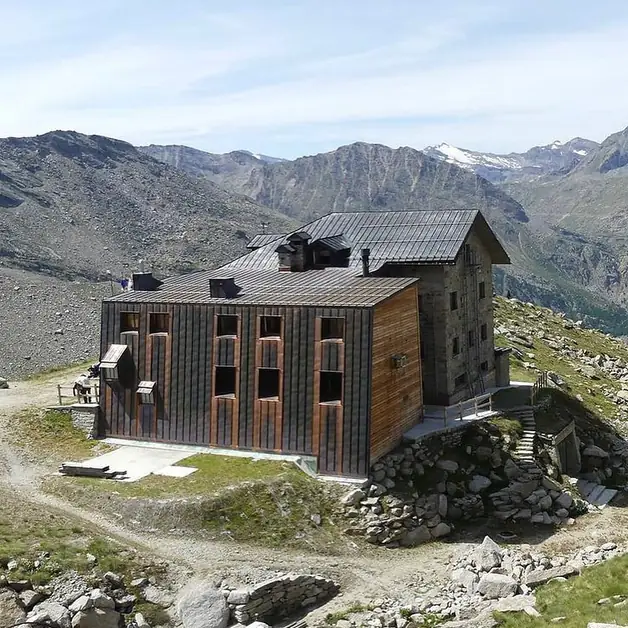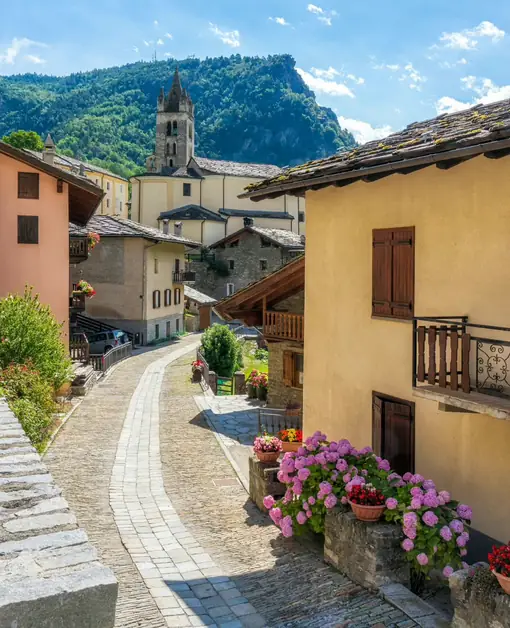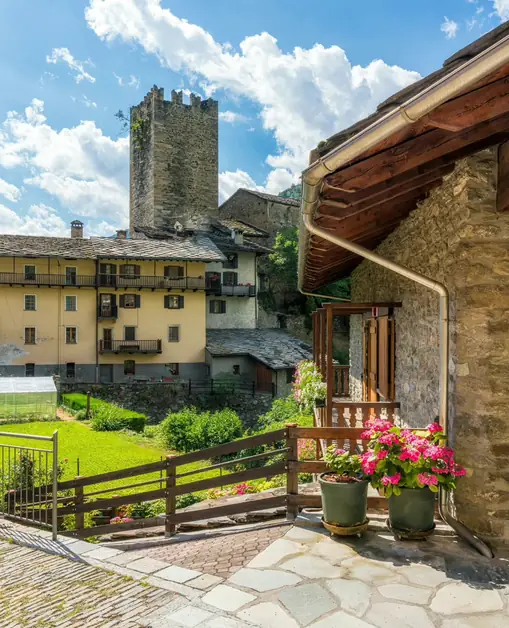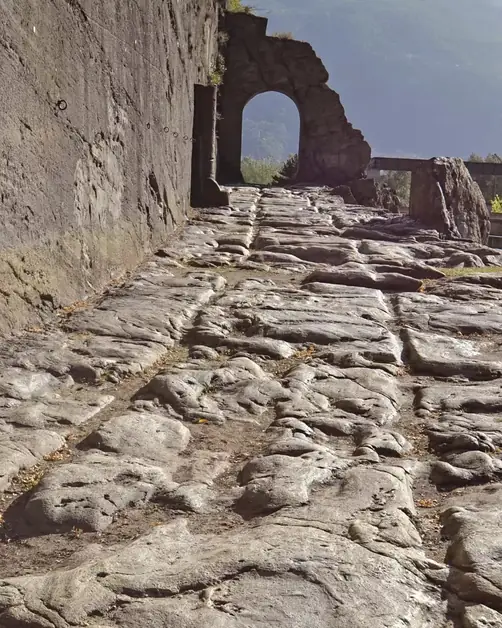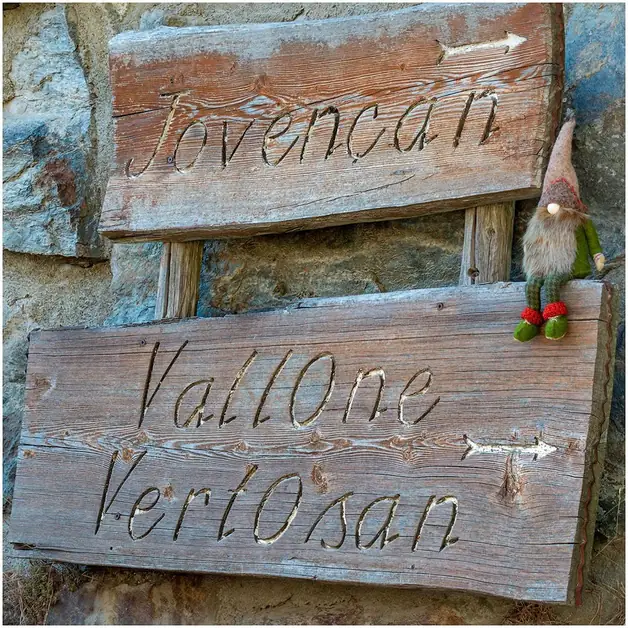The Castle of Avise between history and medieval architecture
The Castle of Avise is a symbol of medieval Aosta Valley history.
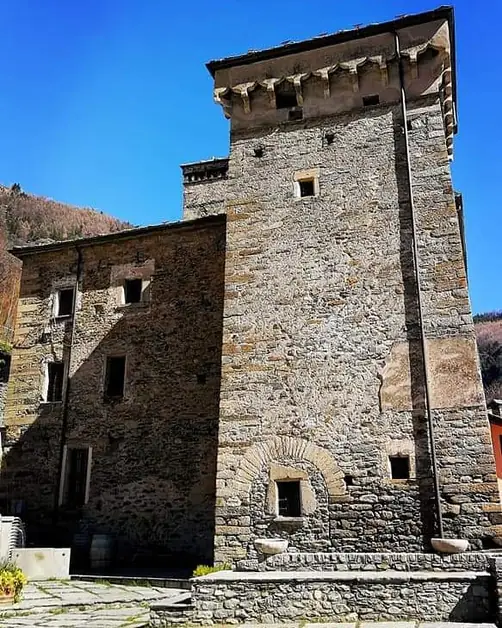
Where is the Castle of Avise located and why is it important?
In the heart of the Aosta Valley, among the mountains and valleys that tell millennia of history, stands the Castle of Avise, one of the most fascinating testimonies of medieval Aosta Valley architecture. The manor is located at the entrance of the village of Avise, along the historic road that connected the plain to Mont Blanc. Its strategic position was not accidental: it dominated the passage and allowed control of access to the valley. Today, the castle, although a private residence, represents a landmark for those visiting the village and wanting to discover the history of the noble families of Aosta Valley and the evolution of feudal power in the region.
When was the Castle of Avise built and by whom?
The Castle of Avise was built in 1492, at the behest of Boniface d'Avise or his son Rodolphe d'Avise, both members of one of the most influential families in the Aosta Valley. At that time, the d'Avise family owned numerous properties and castles, including those of Blonay, Planaval, and Montmayeur. The construction of the castle responded to two needs: to protect the village and at the same time represent the prestige of the family. It was not just a defensive fortress, but also a noble residence where guests were received, fiefs were administered, and the family's image of power was consolidated.
What are the architectural features of the castle?
From an architectural point of view, the Castle of Avise is an excellent example of late medieval and Renaissance architecture. Its structure is compact, with thick walls and few openings to the outside, designed to ensure maximum security. The building develops over several levels, with a square tower that dominates the entire complex. The windows, decorated with worked stone frames, and the arched entrance portal testify to the influence of Renaissance style, which was beginning to spread even in the alpine valleys. The interiors, according to historical descriptions, were richly decorated with coffered ceilings and monumental fireplaces, a sign of the refined taste of the d'Avise family.
What was the function of the Castle of Avise in the Middle Ages?
The castle had a dual function: defensive and residential. Thanks to its dominant position and fortified walls, it could withstand assaults and protect the inhabitants of the village in case of danger. At the same time, it was the administrative center of the fief, where the lords managed lands, taxes, and justice issues. The inner courtyard housed warehouses, stables, and shops, while the upper floors were reserved for noble rooms. This organization reflects the typical structure of late medieval Aosta Valley castles, designed to be self-sufficient and symbols of local authority.
What happened to the castle after the d'Avise family?
With the extinction of the d'Avise family, the castle passed into the hands of the Bianco di San Secondo family, another noble house that held possession until 1798. During this period, the building gradually lost its defensive function and was adapted to a noble residence. At the end of the 18th century, the castle was sold to private individuals, marking the end of its feudal era. From that moment on, the manor became a historical symbol of the region, visitable only externally but still in excellent condition.
What historical elements can still be admired?
Those who visit Avise can admire the compact facade of the castle, the defensive loopholes, the windows with stone lintels, and the main tower that emerges from the complex. The building retains an austere and harmonious appearance, surrounded by ancient stone houses that are part of the medieval village. The castle is located next to the Church of San Brizio, dating back to the 15th century, creating a suggestive contrast between religious spirituality and the temporal power represented by the noble residence.
What can you do in the surroundings of the Castle of Avise?
The village of Avise is a small treasure chest of history and nature. In addition to the main castle, visitors can discover other interesting attractions: Castle of Blonay: located just above the village, it is an ancient medieval fortification that completes the triad of Avise manors. Ruins of the Castle of Cré: reachable on foot, offer a spectacular panorama of the valley and tell a past of wars and noble alliances. Walks and trekking: the paths surrounding Avise lead to Planaval and Valgrisenche, ideal for those who love walking among woods, streams, and panoramic views. Aosta Valley gastronomy: in local taverns and farmhouses, you can taste typical dishes such as polenta concia, fontina DOP, and wines from Enfer d'Arvier, one of the most renowned in the region.
How to reach the Castle of Avise?
The village of Avise is located along the Strada Statale 26, which connects Aosta to Courmayeur. By car, it is easily reachable in about 25 minutes from Aosta and less than 15 minutes from Arvier. For those traveling by train, the Avise station is served by the Aosta–Pré-Saint-Didier line, while a convenient path connects the station to the village center. Visitors can park near the town and continue on foot through the cobbled streets to the castle.
Why visit the Castle of Avise?
The Castle of Avise is a must-visit destination for those who love medieval history, ancient architecture, and authentic villages of the Aosta Valley. Every stone tells a fragment of the past: the struggles between families, the alliances with the Savoy, the daily life of the noble Aostans. Even just observing it from the outside, one can perceive the solidity and elegance of a building that has withstood the test of time, keeping alive the memory of one of the most fascinating eras of the alpine region.
Is the Castle of Avise open for visits?
Not visitable, open on few occasions.
